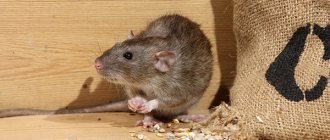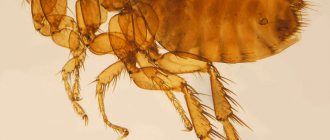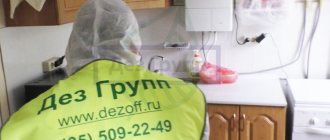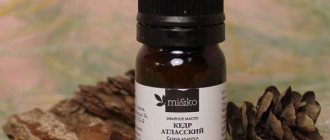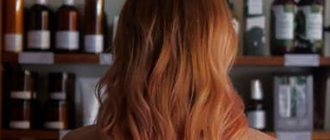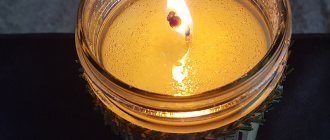Fleas are very small insects that can appear both in the house and in the apartment. They bite people and animals, leaving painful bite marks. Given the speed of their reproduction, the fight must begin from the moment of first detection. Armed with knowledge of what fleas are afraid of in an apartment and choosing a safe remedy, you can quickly get rid of an unpleasant neighborhood.
Natural enemies of fleas in nature
In nature, there are insects that instill fear in the blood-sucking parasites themselves. In particular, these are ants. But now the question arises: which of them is more unwelcome? This does not change the fact that if this natural enemy is in the house, fleas will definitely never appear. These parasites are also vulnerable to fungal infections, but their use is unsafe for human health and pets. In addition, there is something else that fleas are afraid of in cats , and these methods are much more effective and safer, we will get acquainted with them further in the text.
Natural enemies of parasites
There are also several types of insects that can themselves parasitize fleas or are very dangerous for them. In their natural habitat, fleas tend to avoid them at all times.
Flea larvae can be attacked by ants (even domestic pharaoh ants). It is difficult to figure out which of these insects are the least pleasant to coexist with in the same apartment, but if a colony of ants has settled in the room, fleas will no longer be able to live and reproduce normally (their larvae will be completely vulnerable).
Insecticides
They contain various aromatic additives that repel pests. Most insecticidal preparations act so quickly that they do not even have time to leave the threshold of the house. Even though animals can cope with their own blood-sucking insects, they need help in this fight. In addition, you should know that parasites cannot stay in wool for a long time, so they easily fill carpets, cracks, and spaces behind and under baseboards.
So, choose an insecticide:
- Dichlorvos, Karbofos and other aerosols. When using them, you need to choose a time so that there is no one in the house: household members, pets. It is advisable to take indoor plants to the balcony or outside if possible, otherwise they will wither;
- Pyrethrins and pyrethroids. These substances are present in these products: Raptor, Insecticide, Fas. Also present in collars and drops for treating the withers of pets;
- Sprays. Industrial insecticidal preparations containing caustic substances. This is the smell that repels fleas from humans . They will not stay in the apartment for a minute. You can give preference to one of these: “Raid”, “Clean House”, “Butox 50”.
In addition to basic measures to combat these pests, it is necessary to regularly inspect animal fur for the presence of fleas. It’s even better to bathe them with special shampoos, put on collars, and apply drops to the withers.
Popular questions
Is it possible to combine other insecticides with bleach and bleach? Due to the fact that parasites are able to develop immunity to chlorine, it is better to use it after disinfection with stronger chemicals. This is done 1-2 weeks after the general treatment of the room.
Is it possible to poison fleas with white in basements? Planes isolated from people are most suitable for spraying chlorine, since it is quite toxic for households. It can be left in powder form in basements for several months. All this time, the product will remain active and repel parasites.
How often is chlorine disinfection carried out in residential apartments? Ideally, to exterminate parasites, it is necessary to provide them with constant contact with the substance. To do this, you need to spray the solution every 2 weeks until the problem disappears completely. After this, apply the treatment one more time to destroy new individuals hatched from the eggs.
Bleach and bleach are used against fleas as improvised remedies in the absence of more powerful insecticides. It is difficult to save an apartment with severe damage, since only adult individuals can eliminate these substances.
It is advisable to use chlorine as a prophylactic agent, spraying it over the surface several times a month. If the insect is provided with direct contact with the poison, the chlorine will not only drive guests out of the house, but can also cause their death.
Air temperature unacceptable for fleas
For normal existence and reproduction, certain conditions are required, namely +30, and not higher than +45 degrees. At -10 they stop reproducing, and at -15 they begin to look for a new shelter. Therefore, in winter they are frozen out from everywhere, wherever they are.
Fleas are also but only when there is a lot of it. In this case, they experience oxygen starvation, and accordingly, they begin to die en masse. When bathing cats and dogs, you probably noticed that fleas gradually begin to move from the body to the head. Therefore, it must be moistened generously and washed with shampoo, but at the same time, do not forget about the ears. To prevent water from getting in there, you can insert a little cotton wool into the animal’s ears.
Unfavorable environmental conditions
Fleas, like a number of other blood-sucking insects, prefer warm climates and try to find an appropriate host. For example, dogs and cats hide in shelters and live in houses, that is, they live in places where the parasite and its host can safely wait out the bad weather.
Unfavorable conditions force the flea to leave its owner or its habitat. The insect cannot tolerate heat, cold, or high humidity. All these factors can be used in the fight against the parasite.
A-a-a-a-a...
Are fleas afraid of water and sun?
A full bath for your pet solves the problem with insects, but only partly. Some parasites still survive. As a rule, young individuals and larvae drown, while the pupae, due to their structural strength and good adhesion, remain on the animal’s fur.
The insect does not tolerate direct sunlight. If the carrier spends most of his time basking in the sun on a fine summer day, then the parasites do not linger on such pets. In the warm season, these two factors can be combined: keep the animal in water, and then dry it in the sun.
For reference! The flea lays eggs not only on the fur of pets, but also on human clothing, as well as interior items. The parasite will die if carpets, pillows, bed linen, etc. are properly washed and dried naturally.
Temperature
Optimal climatic conditions for fleas are +25⁰С with a humidity level of 40-60%. Sharp temperature fluctuations negatively affect larvae and pupae. The latter may go into hibernation if the thermometer drops or rises to critical levels.
At temperatures above +35⁰C, insect eggs begin to dry out, and upon reaching the threshold of +45⁰C, adult individuals begin to die. To disinfect basements, outbuildings, apartments and interior items, it is enough to install a heat gun and let it work for several hours.
Fleas and frost also do not mix. As soon as the thermometer drops below 0⁰C, the parasite begins to experience severe discomfort. At -10⁰С the insect stops reproducing, and at -20⁰С it dies. In the winter months, fleas can be killed by cold: open the windows wide and leave the room for several hours.
Important! Disinfection by lowering the temperature is not suitable for pets and apartments. Pets will get hypothermic and get sick, and the paint in the house will crack, the wallpaper will peel off and the decorative trim will become unusable.
Natural enemies of fleas
Parasites can be killed by some types of fungal infections, while they coexist well with others and become their carriers. Natural enemies of fleas are ants and cockroaches. Red-headed individuals and a subspecies of pharaoh insects feed on parasite larvae and conflict with adult individuals regarding the division of territory.
Therefore, fleas do not take root in kitchens and other rooms where there is food for a cockroach or ant. Naturally, the decision to fight a blood-sucking parasite by increasing the population of other insects makes no sense.
Folk remedies that fleas are afraid of
In the fight against blood-sucking insects, it is recommended to use not only commercial insecticides, but also folk remedies. Knowing what fleas don’t like makes the choice even easier.
So, the options:
- Persian chamomile. To prepare the decoction, use dried inflorescences. Proportion: per 0.5 liters of water = 2 cups of grass. Strain and can be used: to wash cracks in the floor, to bathe animals;
- Boric acid + tar soap. Sprinkle the powder over the carpet and under the bedding where the animal sleeps. Bathe your pet with soap;
- Regular salt. Scatter it over carpets, rugs and floors. The crystals damage the bloodsucker's cover, so they die;
- Sodium bicarbonate and baby soap. Grate a piece of soap on a fine grater, add hot water and soda, stir. Treat the suspected habitats of parasites with this mixture. Here's another thing that fleas are afraid of in the house - the smell of onions and garlic. Chop them up and place them in all corners, crevices, near the trash can and in other areas.
- You can also use vinegar against fleas in your apartment. Pour into a spray bottle to treat cracks, baseboards and other suspected places where bloodsuckers accumulate.
Regardless of what method was used to influence the bloodsuckers, it is necessary to carry out wet cleaning after 2-3 hours. If salt or baking soda was used in its pure form, it is better to clean it within 24 hours. But first, vacuum, shake out the contents of the dust container into a bag, dispose of it, and wash the bag with powder.
Insecticidal preparations
ATTENTION. Most of all, insects are afraid of drugs that destroy the nervous system.
They feel these substances well, but there is no time left to leave the room. The effect of such insecticidal agents occurs instantly. The following can help in the fight against fleas:
- Dichlorvos, Karbofos, etc. Harmful to humans and pets, therefore use is only allowed indoors.
- Pyrethroids and pyrethrins . Slightly toxic substances. Among the products containing them are Raptor, Medilis-Tsiper, FAS products, and Klopomor.
- Imidacloprid, Fipronil. Non-poisonous elements. Practice making drops.
Chemical and natural odors
Knowing what smells fleas don’t like, you can get rid of them in a matter of minutes. They cannot stand the smell of the following chemicals: kerosene, turpentine, alcohol, gasoline, chloroform. Vinegar is also effective : dilute it in equal proportions with water, wash the floors, wipe baseboards, window sills, and walls. They also cannot tolerate the smell of paint, solvents, cement, or putty.
Those who live in a private house can plant mint, pine, thyme, wormwood, and geranium. Here's what repels fleas : essential oils of aloe, camphor, walnut, eucalyptus, tansy, juniper. All these natural smells repel parasites. City dwellers can place herbs in all corners of the apartment, or purchase essential oil based on one of the above plants.
Efficiency
When wondering whether whiteness will help against fleas, it is worth noting that this composition is quite effective, as it contains chlorine and other auxiliary substances. The main component of the product is used in nurseries for cleaning cages and disinfecting surfaces.
Bleach against fleas is effective only if the insecticide is used correctly. When exposed directly, it can dry out the bodies of parasites.
When wondering whether bleach helps against fleas with a single use of the product, it is worth noting that this depends on the degree of infestation of the room. Usually you need to spray the drug several times at certain intervals.
What are fleas not susceptible to?
Thoughtless actions can lead to the following negative consequences: chemical burns from aggressive insecticides, allergies. They do not have any negative impact: UV lamps, sun rays, kerosene, mosquito repellents and other means. But are fleas afraid of bleach - yes, regular treatment of the room with the addition of any chlorinated product helps get rid of these blood-sucking parasites.
One more nuance should also be noted: after preparing a decoction from any plant, it should be used immediately and not stored until the next use. Now every housewife knows what smell fleas don’t like, and they will choose the appropriate method for themselves.
Watch the video - what fleas are afraid of:
Source
Are they afraid of frost?
The answer to the question of whether fleas are afraid of frost is obvious: even a slight drop in temperature is destructive for them.
In order to prevent the appearance of parasites, as well as if the presence of insect colonies is detected, it is recommended to thoroughly freeze the room.
To do this in winter, you should fully open the windows and doors and turn off the heating. You should leave the room until it cools completely; it is advisable to withstand the cold for at least two hours.
It should be noted that parasite eggs may be more resistant to negative environmental factors.
Accordingly, to completely kill insects, the room should be frozen for several days. It is recommended to use this method when treating housing with insecticides.
How to treat carpet for fleas
Some housewives solve this problem with a vacuum cleaner. This is an effective but very long process. You need to vacuum every day for 14 days. It is impossible to get rid of a large number of parasites in one go, so they may choose other hidden places. Therefore, it is best to use aerosol or powder preparations.
Popular aerosols
- Control Home. Within 5-10 minutes, up to 98% of adult insects and larvae die. The active substance has a paralyzing effect on all types of blood-sucking insects. The product is used economically, the effect lasts up to 1 month.
- Executioner. Dilute it with water according to the attached instructions. Spray with a spray bottle and remove with a washing vacuum cleaner.
- Raid. One bottle is enough to treat 50 square meters. meters. The aerosol can be purchased unscented or with aromatic additives.
Even if the instructions indicate that the product is safe, you should not neglect precautions. For people with allergies and bronchial asthma, it is better to refrain from this method of treatment and seek professional help or ask someone you know.
Contact powder preparations
The most effective are considered to be: “Ranosan”, “Super Fas”, “Phenaxin”, dust. Scatter in various hard-to-reach places, but so that pets and small children cannot reach them. Their advantage lies in the immediate effect; not only adults die, but also larvae. In addition, there is no need to carry out repeated disinfection, according to the manufacturer. But it is better to do this after a few days to be completely sure that the parasites are destroyed.
Not every housewife is in a hurry to use aggressive chemicals, so they give preference to proven folk remedies.
Tansy and wormwood
Place these plants all over the floor, if possible. An infusion is prepared from dried herbs; you can buy it at any pharmacy or dry it yourself.
To prepare a natural remedy, you need:
- Pour 3 dessert spoons of wormwood and 2 tsp into a liter jar. tansy. Add literally a few eucalyptus (mint) leaves to soften the bitter smell.
- Pour a glass of boiled water.
- Cover with a lid and leave for 12 hours.
Strain the infusion through several layers of gauze. Pour into a spray bottle and treat the room. Corners, baseboards, and carpeting deserve special attention.
Cold, steam and sun
If pests are present in winter, open windows and doors for 3 hours. Method of control in the summer: hang all carpets and rugs in the sun. Under the influence of ultraviolet rays, all fleas and larvae will die. Additionally, disinfect the entire apartment: furniture, floors, baseboards, etc. And the last method is to use a steam cleaner. Use a steam jet to treat carpets and rugs.
Sodium bicarbonate
Mix baking soda in equal proportions with salt. Sprinkle carpets and rugs with this mixture. If fleas are present on sofas and armchairs, you can also use it, it will not harm them in any way. After 12 hours, vacuum all surfaces where this mixture was applied. During this time, it is advisable to leave home so that no one goes to the treatment areas. It is advisable to spend the weekend, send household members on a visit or to the country, and do the disinfection yourself.
What effect does bleach have?
This remedy has been familiar to us for many years. It is used as a disinfectant and also has an antiseptic effect. Bleach does an excellent job of killing bacteria, microorganisms, insects and parasites. It is a fairly popular means for disinfection in nurseries and veterinary clinics.
Regarding the action against fleas, the effectiveness of its use will directly depend on its correct use. And it works in the following way: when it gets on the body of the parasite, it contributes to a significant decrease in the level of moisture in the body. In other words, bleach can dry out the flea’s body, which will lead to its death.
But in this case, a very important point is that when treating with this product, it is necessary to ensure contact of the parasite with bleach. Since the action is carried out only when the product hits the fleas. In addition, the effect cannot be achieved in one application; a positive result is possible only with regular treatments.
Also, whiteness has a similar effect, since the basis of this product is also bleach. Regarding the treatment, which is carried out in residential areas where pets live, it is recommended to use white. It is imperative to follow the recommendations for use and follow the correct proportions.
Where do they come from
For a person who does not have pets, their appearance in the house is often a shock. Really, where do they come from? If the apartment is located on the first floor, then it is likely that mice or rats brought fleas from the basement.
Very often, fleas enter an apartment on its human owners. In addition, these parasites are quite capable of moving independently, covering considerable distances in large leaps. The appearance of fleas in an apartment does not mean that there is a lack of hygiene in it - it’s just the way the circumstances have developed.
Here are the main ways they can get into the apartment:
- The housing is on the first floor and they were brought in from the basement by rodents.
- Fleas have moved to you from neighbors who have a pet.
- They were brought in by a cat or dog that accidentally (even for a short time) ended up in your home.
- The owner of the apartment himself brought it into the house. The risk is especially high for those who frequently visit basements or non-residential premises.
Household fleas most often bite the legs and stomach of humans. After bites, red, large and very painful spots remain. Unlike mosquito bites, flea bites do not go away for several days.
Drugs that cause paralysis in insects
There are a number of drugs that penetrate the chitinous membrane of pests. After the active substances enter the insect’s body, its nervous system is damaged. One of the effective drugs with a paralyzing effect is Tsifoks.
The drug is available in the form of a clear liquid with a pungent odor. Cypermethrin is the main active ingredient. The insecticide is economical: a liter container is enough to treat a large apartment several times.
Attention! The product is very toxic! Used for treating premises and summer cottages. The insecticide is available in glass bottles of 50, 500 and 1000 milliliters.
Another option for killing fleas is Sinuzan spray. A powerful professional product used by exterminators. Users note the rapid destruction of fleas - within one hour. The drug copes with adults, their eggs and larvae. Using the product requires strict compliance with safety measures. After treatment, leave the room for several days.
Treating the area where the dog lives
To remove fleas from a dog, it is not enough to treat only the pet. The insects living next to it will return to the “host” as soon as the drug expires. Therefore, it is necessary to simultaneously carry out a thorough disinfestation of the premises (apartment, house, booth) in which the pet lives.
Treating your apartment for dog fleas
There are several ways to disinfect an apartment. You can use one, the most suitable one, or you can use several at once.
What do fleas look like on a dog?
Thermal impact. If the temperature outside is sub-zero, it is enough to take the things in which fleas have settled outside for a few hours outside. Insects can also be killed by exposing them to boiling water (by dousing or boiling them). Chemical attack. Products such as Karbofos, Reid, Fenaxin and the like are used to treat floors, walls, corners, utility rooms, and large interior items (for example, upholstered furniture). You can use insecticidal preparations in the form of a spray or powder that were used to treat the dog
It is important that there is not a single untreated corner left, otherwise the processing will have to start all over again. Traditional methods. Among the folk methods for treating an apartment from dog fleas, the same means are used as for disinsection of a pet.
These are: wormwood, kerosene, pine sawdust and others. Only kerosene treatment leads to the death of insects; other methods can be used as a complement to the chemical option. Infusions and decoctions are prepared from the plants, which are used to wipe all surfaces in the house, preferably several times a day. As an option, spread fresh wormwood around the apartment (along the baseboard, in corners, under furniture), and change it as it dries for a month (minimum). The professional way. The services of special services for exterminating fleas indoors are sought in difficult situations, when other methods are ineffective. The essence of professional treatment is the artificial creation of fine vapor particles containing an insecticide. These particles settle on surfaces, penetrating deep into porous materials, causing the death of insects.
Processing the dog house
When removing fleas from a dog, you also need to put things in order in the kennel. To destroy insects, the same methods and preparations are used as in the apartment. The litter must be burned, and to prevent the return of bloodsuckers, branches of wormwood or tansy should be laid out inside and around the booth (they should be periodically replaced with fresh ones).

